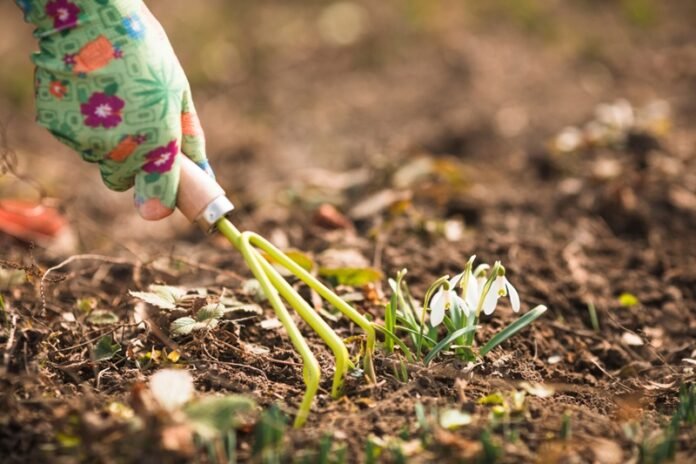Lily of the Valley (Convallaria majalis) is a beloved perennial known for its fragrant, bell-shaped white flowers and lush green foliage. This elegant plant, which symbolizes purity and happiness, is a delightful addition to any garden. Here’s a comprehensive guide to help you grow and care for Lily of the Valley from planting to blooming.
Planting Lily of the Valley Bulbs
Preparing for Planting
Lily of the Valley grows from rhizomes, often referred to as “pips.” The best time to plant these pips is in the fall or early spring.
Planting Steps
- Choose Healthy Pips: Select plump, healthy pips with visible buds.
- Prepare the Soil: Loosen the soil to a depth of 6-8 inches.
- Spacing: Plant the pips about 1-2 inches deep and 6 inches apart to allow for spreading.
- Planting: Place each pip with the bud pointing upwards, cover with soil, and water thoroughly.
Ideal Soil Conditions and Location
Soil Requirements
Lily of the Valley thrives in moist, well-drained soil rich in organic matter. The ideal soil pH is slightly acidic to neutral, between 6.0 and 7.0.
Location
Choose a location with partial to full shade. Lily of the Valley prefers cool, shaded environments and can tolerate deep shade, making it perfect for under trees or in shadowy garden corners.
Watering and Fertilization Tips
Watering
- Initial Watering: Water thoroughly after planting to help the roots establish.
- Ongoing Care: Keep the soil consistently moist but not waterlogged. Water regularly during dry spells, especially in the first growing season.
Fertilization
- Organic Matter: Incorporate compost or well-rotted manure into the soil before planting.
- Annual Feeding: Apply a balanced, slow-release fertilizer in early spring to promote healthy growth and blooming.
Growing and Caring Tips for Lily of the Valley
Mulching
Apply a layer of organic mulch around the plants to retain soil moisture and suppress weeds.
Division
Lily of the Valley can become crowded over time. Divide the clumps every 3-4 years in the fall to maintain vigorous growth and prevent overcrowding.
Pests and Diseases
Lily of the Valley is relatively pest-resistant, but keep an eye out for slugs and snails. Ensure good air circulation to prevent fungal diseases.
Seasonal Care and Maintenance
Spring
- Remove any winter mulch and debris.
- Apply a balanced fertilizer and water well.
Summer
- Maintain soil moisture and mulch to conserve water.
- Watch for signs of stress or pests.
Fall
- Divide overcrowded clumps and replant.
- Add a layer of mulch to protect the roots during winter.
Winter
- Lily of the Valley is hardy and can survive frost. However, adding a light mulch layer can provide extra protection in extremely cold climates.
Varieties and Cultivars of Lily of the Valley
Common Varieties
- Convallaria majalis: The classic white-flowered variety.
- Convallaria majalis ‘Rosea’: A pink-flowered cultivar offering a unique twist on the traditional white blooms.
- Convallaria majalis ‘Albostriata’: Features variegated leaves with white stripes.
Choosing Cultivars
Select cultivars based on your garden’s aesthetic and growing conditions. The pink and variegated varieties can add an interesting visual contrast.
Troubleshooting Common Issues
Non-Blooming
- Cause: Overcrowding, lack of nutrients, or insufficient light.
- Solution: Divide plants, fertilize in early spring, and ensure they receive adequate, indirect light.
Yellowing Leaves
- Cause: Overwatering or poor drainage.
- Solution: Improve soil drainage and adjust watering practices.
Poor Growth
- Cause: Nutrient deficiency or poor soil conditions.
- Solution: Amend soil with organic matter and use a balanced fertilizer.
Pests and Diseases
- Common Issues: Watch for slugs, snails, and fungal diseases.
- Solution: Use organic pest control methods and ensure good air circulation.
Lily of the Valley is a charming and low-maintenance addition to any garden, offering fragrant blooms and lush foliage. With proper planting, care, and maintenance, these delightful plants will bring beauty and joy to your garden for many years.
FAQs:
Lily of the valley typically blooms in late spring, around May. It takes about a year after planting for them to establish and produce flowers, although some may bloom in their first year under optimal conditions.
The stages of a lily blooming include germination (for those grown from seeds), growth of shoots, development of leaves, formation of buds, and finally the opening of the flowers. Each stage is critical for the healthy development and flowering of the plant.
Lily of the valley may not flower due to factors like insufficient light, poor soil quality, overcrowding, or lack of nutrients. Ensuring they are planted in well-drained, nutrient-rich soil with adequate light can help promote blooming.
Lilies grown from seeds can take 2-7 years to bloom, depending on the species and growing conditions. This lengthy period is due to the time required for the plant to mature and develop a strong root system.
Lilies can bloom faster with proper care, including planting in well-drained soil, providing adequate sunlight, regular watering, and using balanced fertilizers. Ensuring they are not overcrowded and have enough space to grow also promotes faster blooming.
For most lily species, it takes about 2-7 years to bloom from seed. The exact time depends on the specific type of lily and the growing conditions provided.
Most lilies bloom once a year, typically in the summer. However, the bloom period can vary slightly depending on the species and growing conditions.
The lifespan of a lily plant can vary, but many perennial lilies can live for several years, often up to 3-5 years or longer, with proper care. Some species may even last decades in the right environment.
Yes, potted lilies can bloom again if they are properly cared for. After the initial bloom, allow the foliage to die back naturally, then provide the bulbs with a cool dormant period before replanting or keeping them in a cool, dry place until the next growing season.















